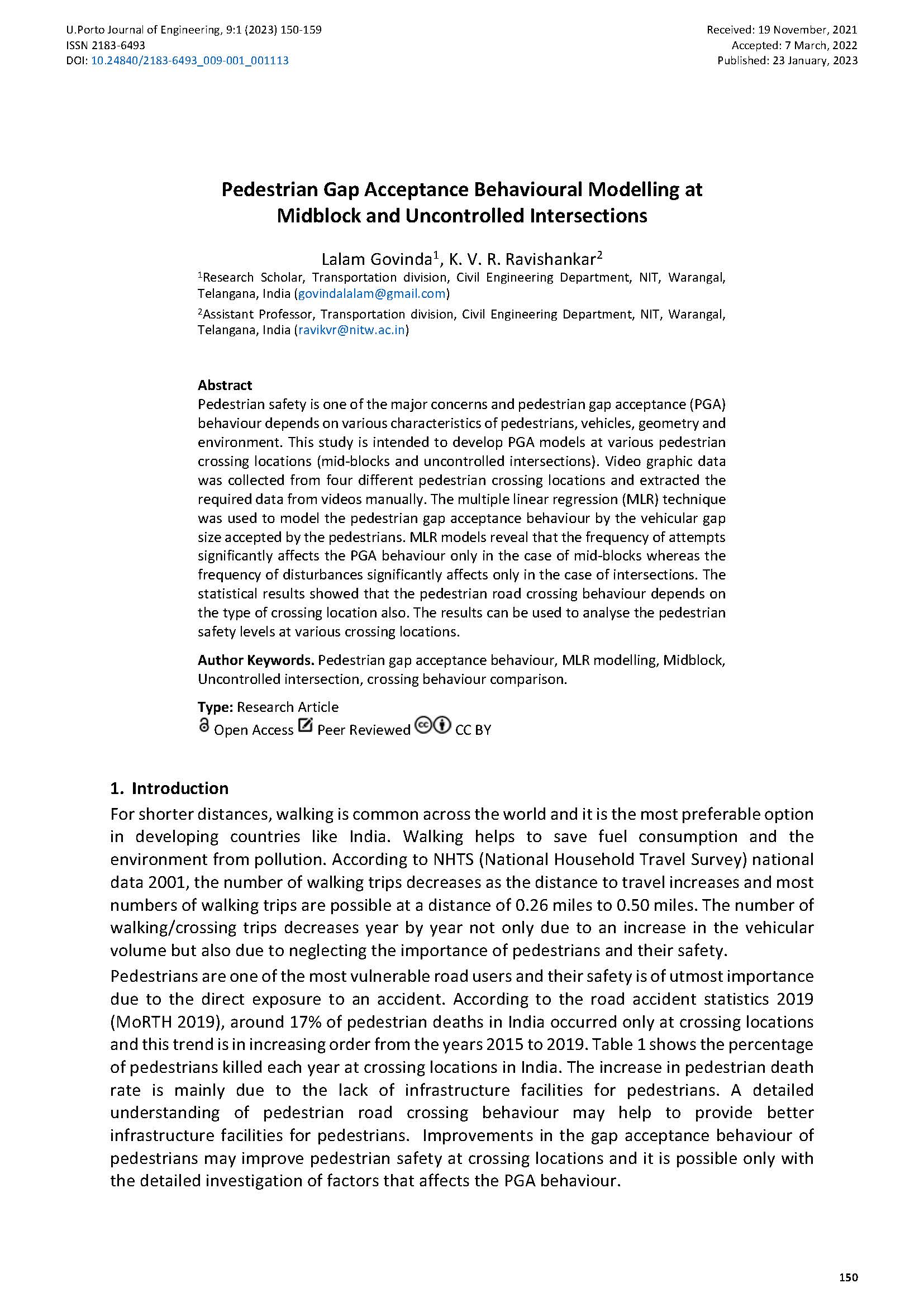Pedestrian Gap Acceptance Behavioral Modelling at Midblock and Uncontrolled Intersections
Main Article Content
Abstract
Pedestrian safety is one of the major concerns and pedestrian gap acceptance (PGA) behaviour depends on various characteristics of pedestrians, vehicles, geometry and environment. This study is intended to develop PGA models at various pedestrian crossing locations (mid-blocks and uncontrolled intersections). Video graphic data was collected from four different pedestrian crossing locations and extracted the required data from videos manually. The multiple linear regression (MLR) technique was used to model the pedestrian gap acceptance behaviour by the vehicular gap size accepted by the pedestrians. MLR models reveal that the frequency of attempts significantly affects the PGA behaviour only in the case of mid-blocks whereas the frequency of disturbances significantly affects only in the case of intersections. The statistical results showed that the pedestrian road crossing behaviour depends on the type of crossing location also. The results can be used to analyse the pedestrian safety levels at various crossing locations.
Downloads
Article Details

This work is licensed under a Creative Commons Attribution 4.0 International License.
Authors who publish with this journal agree to the following terms:
- Authors retain copyright and grant the journal right of first publication with the work simultaneously licensed under a Creative Commons Attribution License that allows others to share the work with an acknowledgement of the work's authorship and initial publication in this journal.
- Authors grant the journal the rights to provide the article in all forms and media so the article can be used on the latest technology even after publication and ensure its long-term preservation.
- Authors are able to enter into separate, additional contractual arrangements for the non-exclusive distribution of the journal's published version of the work (e.g., post it to an institutional repository or publish it in a book), with an acknowledgement of its initial publication in this journal.
- Authors are permitted and encouraged to post their work online (e.g., in institutional repositories or on their website) prior to and during the submission process, as it can lead to productive exchanges, as well as earlier and greater citation of published work (See The Effect of Open Access).

